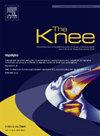Aseptic loosening in non-augmentable versus augmentable tibial baseplate total knee arthroplasty designs: a single-centre comparative 10-year outcomes study
IF 2
4区 医学
Q3 ORTHOPEDICS
引用次数: 0
Abstract
Background
Aseptic tibial loosening is a leading cause of revision in total knee arthroplasty (TKA). Previous work has highlighted concerns over the 5-year survivorship of a specific non-augmentable NexGen Legacy Posterior Stabilised (LPS) tibial baseplate. This study compares the long-term outcomes of augmentable versus non-augmentable tibial implants with a minimum 10-year follow-up.
Methods
A retrospective analysis identified patients undergoing primary cemented TKA between 2009 and 2014. Patients were categorised by tibial baseplate type (augmentable vs. non-augmentable). The primary outcome was aseptic loosening, assessed using Kaplan-Meier survival analysis. Secondary outcomes included overall revision rates and reasons for revision with a subgroup analysis by age and BMI.
Results
Among 1830 TKAs, revision rates were significantly higher in the non-augmentable group (6.4 % vs. 4.1 %; p = 0.036). Aseptic loosening was five times more common with non-augmentable implants (2.5 % vs. 0.7 %; p = 0.005). Kaplan-Meier analysis showed significantly reduced survivorship in the non-augmentable group due to aseptic loosening (p = 0.0012, HR = 0.262), with a marked decline after 100 months. Patients under 65 with higher BMI had greater risk, with aseptic loosening occurring in 9.1 % of those with BMI > 40 kg/m2.
Conclusion
Non-augmentable NexGen LPS tibial implants are associated with higher rates of aseptic tibial loosening at long-term follow-up when used in combination with a posterior stabilised NexGen femoral implant. Younger, high-BMI individuals are at particular risk. These findings support the need for further investigation into the mechanisms of implant failure, as well as a more granular approach to data reporting within large-scale registries to avoid camouflage by more successful implants of the same brand.
无菌松动在非增强与增强胫骨基板全膝关节置换术设计:一项单中心比较10年结果研究
无菌性胫骨松动是全膝关节置换术(TKA)翻修的主要原因。先前的研究强调了对特定的不可扩充的NexGen Legacy后路稳定(LPS)胫骨基板5年生存率的关注。本研究通过至少10年的随访比较了可隆骨与非隆骨胫骨植入物的长期疗效。方法回顾性分析2009年至2014年接受原发性骨水泥TKA的患者。患者按胫骨基板类型(可增强与不可增强)进行分类。主要终点为无菌性松动,采用Kaplan-Meier生存分析进行评估。次要结局包括总体翻修率和翻修原因,并按年龄和BMI进行亚组分析。结果1830例tka中,非扩增组的修正率显著高于对照组(6.4% vs. 4.1%; p = 0.036)。无菌性松动在非可隆胸植入物中更为常见(2.5%比0.7%;p = 0.005)。Kaplan-Meier分析显示,由于无菌性松动,非扩增组的生存率显著降低(p = 0.0012, HR = 0.262), 100个月后显著下降。65岁以下BMI较高的患者风险更大,BMI≥40 kg/m2的患者中有9.1%发生无菌性松动。结论在长期随访中,与后路稳定的NexGen股骨假体联合使用不可增强的NexGen LPS胫骨假体时,无菌性胫骨松动的发生率较高。年轻的、高bmi的人尤其危险。这些发现支持了对植入失败机制的进一步研究,以及在大规模注册中采用更细粒度的数据报告方法,以避免被更成功的同一品牌植入物所掩盖。
本文章由计算机程序翻译,如有差异,请以英文原文为准。
求助全文
约1分钟内获得全文
求助全文
来源期刊

Knee
医学-外科
CiteScore
3.80
自引率
5.30%
发文量
171
审稿时长
6 months
期刊介绍:
The Knee is an international journal publishing studies on the clinical treatment and fundamental biomechanical characteristics of this joint. The aim of the journal is to provide a vehicle relevant to surgeons, biomedical engineers, imaging specialists, materials scientists, rehabilitation personnel and all those with an interest in the knee.
The topics covered include, but are not limited to:
• Anatomy, physiology, morphology and biochemistry;
• Biomechanical studies;
• Advances in the development of prosthetic, orthotic and augmentation devices;
• Imaging and diagnostic techniques;
• Pathology;
• Trauma;
• Surgery;
• Rehabilitation.
 求助内容:
求助内容: 应助结果提醒方式:
应助结果提醒方式:


